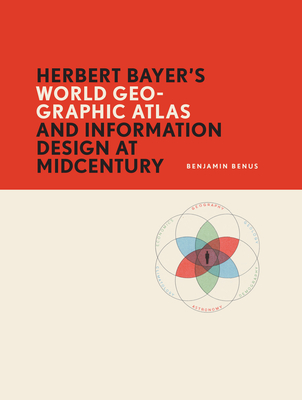
Herbert Bayer's World Geo-Graphic Atlas and Information Design at Mid-Century
Description
Between 1947 and 1953, the Austrian-born, Bauhaus-trained artist Herbert Bayer (1900-1985) oversaw the design and production of the World Geo-Graphic Atlas, a landmark work of graphic design and data visualization. Commissioned by Container Corporation of America to mark the twenty-fifth anniversary of the Chicago-based company's founding, the Atlas would ultimately become much more than the promotional publication its patrons had initially envisioned. The Atlas's imaginative presentation methods have had a lasting impact within the fields of information design and visual education, transforming the look and character of subsequent geographic atlases and popular scientific illustration. Characterized by Bayer as "the concept of a 'visualist, '" the Atlas's graphic presentations made complex and specialized information comprehensible and engaging for readers--a point he underscored in giving the Atlas's title its distinctive, hyphenated formulation "geo-graphic." The Atlas's narrative proved to be prescient as well, highlighting challenges related to economic globalization and human-caused environmental destruction--crises that have only grown more acute in the seventy years since its publication.
In Herbert Bayer's World Geo-Graphic Atlas and Information Design at Midcentury, Benjamin Benus tells the story behind this work's creation. Richly illustrated and drawing on extensive archival documentation, Benus's account reconstructs the working methods and intellectual exchanges through which Bayer and his circle of scientific collaborators realized this remarkable work. Reflecting on Bayer's attempt to balance and resolve the commissioned work's educational and advertising functions, Benus's study offers broader insights into the roles twentieth-century artists and designers played in popularizing scientific knowledge and shaping audiences' geographical worldviews.
